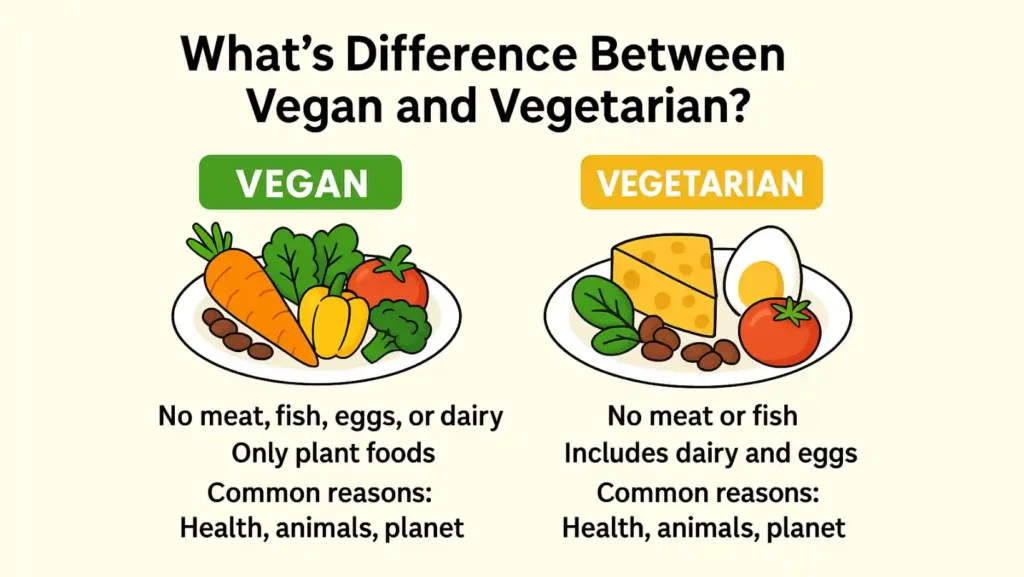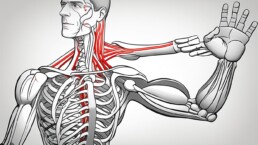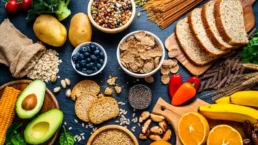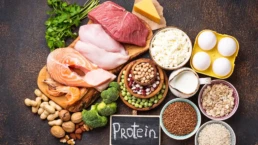The vegan and vegetarian lifestyle is often seen as similar, but their core principles, food choices, and nutritional impacts differ in meaningful ways. A vegan follows a plant-only diet, avoiding all animal products such as milk, eggs, and honey, while a vegetarian excludes meat and fish but may include dairy or eggs, depending on the type.
Table of Contents
ToggleThe difference between vegan and vegetarian eating patterns goes beyond food, it’s also about ethics, environment, and personal health choices. While both diets can offer significant benefits, such as improved heart health and lower cholesterol, they also demand careful planning to meet daily nutrition needs.
Understanding the vegetarian vs vegan diet helps you choose what aligns best with your values, health goals, and lifestyle.
What’s the Difference Between Vegan and Vegetarian?
The vegan and vegetarian choice is about what you eat and what you avoid. Both focus on plants. Both can be healthy. The main split is animal foods.
Definition of a vegan diet — a fully plant-based lifestyle
A vegan eats only plant foods. A vegan avoids meat, fish, eggs, milk, and honey. Some vegans also avoid products made from animals like leather or wool. In food, vegans stick to fruits, vegetables, grains, beans, nuts, and seeds.
Definition of a vegetarian diet — includes dairy and eggs
A vegetarian does not eat meat or fish. Many vegetarians eat dairy or eggs. Lacto-ovo vegetarians eat both dairy and eggs. Some vegetarians may avoid eggs or dairy by choice.
Main food differences between vegan and vegetarian
The main food split between vegan and vegetarian is dairy and eggs. Vegans do not eat them. Many vegetarians do. Vegetarians can get some nutrients from milk, cheese, and eggs that vegans must get elsewhere.
Common reasons for choosing each diet
People choose these diets for health. Some choose them to help animals. Others do it for the planet. Some choose plant foods for taste or cost. Each person has a reason.
Vegan vs Vegetarian Diet: What They Include
This part lists allowed and restricted foods in each plan. It also names common variations and points out planning needs.
Foods allowed and restricted in a vegan diet
- Allowed: fruits, vegetables, whole grains, beans, lentils, tofu, tempeh, nuts, seeds, plant milks, plant yogurts, and many fortified foods.
- Restricted: all meat, fish, eggs, dairy, and honey. Check labels. Some processed foods hide dairy or egg.
Foods allowed and restricted in a vegetarian diet
- Allowed: plant foods plus some animal products like milk, cheese, yogurt, or eggs, depending on the type.
- Restricted: meat and fish for most vegetarians, though pescatarians eat fish. Vegetarians can have an easier time getting calcium and B12 from dairy and eggs.
Variations: lacto-ovo, pescatarian, and flexitarian
- Lacto-ovo vegetarian: eats dairy and eggs.
- Pescatarian: eats fish and plants, but no other meat.
- Flexitarian: mostly plant-based but eats meat sometimes.
These names help people pick a fit for their life.
Nutrition balance and planning challenges
Both diets need planning. Vegans must plan for B12, vitamin D, omega-3 fats, iron, calcium, and sometimes zinc. Vegetarians often have an easier time with B12 and calcium thanks to dairy and eggs, but they still need to watch iron and protein quality.
Vegan vs Vegetarian Nutrition Comparison
This section compares key nutrients and shows simple meal swaps. It answers how to stay balanced.
Macronutrient differences: protein, fats, and carbs
Protein can come from plants or from dairy and eggs. Vegans rely on legumes, tofu, tempeh, seitan, nuts, seeds, and whole grains. Vegetarians can add milk, yogurt, cheese, and eggs. Fats come from nuts, seeds, avocados, and oils. Carbs come from grains, fruits, and starchy vegetables. Both diets can meet macronutrient needs with proper choices.
Vegan and vegetarian protein sources show how vegans and vegetarians get protein in different ways.
Micronutrients: vitamin B12, calcium, and iron
Vitamin B12 is the nutrient that plants rarely supply. Vegans must use fortified foods or a B12 supplement. Vegetarians can often get B12 from dairy and eggs. Calcium comes from dairy for many vegetarians.
Vegans can use fortified plant milk, tofu made with calcium sulfate, leafy greens, and fortified foods. Iron exists in plant and animal foods. Plant iron (non-heme iron) is harder to absorb. Pair plant iron with vitamin C to boost absorption.
Importance of fortified foods and supplements
Fortified plant milk and cereals can add B12, vitamin D, calcium, and sometimes iron. Omega-3 supplements from algae help vegans get DHA and EPA. If you switch diets, check your levels with a blood test and follow advice on supplements.
Sample daily meal comparison (vegan vs vegetarian)
- Vegan day: oatmeal with fruit and flax, lentil soup, tofu stir-fry, bean salad, fruit snack.
- Vegetarian day: yogurt with fruit, egg and veggie wrap, cheese and vegetable pasta, salad with chickpeas, fruit snack.
Both days can meet needs if you add a variety of foods and include fortified items or supplements when needed.
Vegetarian vs Vegan Health Benefits
Both diets can improve key health markers. This section lists common benefits.
Lower cholesterol and improved heart health
Plant-rich diets often lower LDL cholesterol. They can reduce saturated fat intake that comes from many animal foods. Lower cholesterol reduces heart disease risk.
Reduced risk of obesity and type 2 diabetes
Many people on well-planned plant diets eat fewer calories and more fiber. Fiber helps steady blood sugar. These effects can lower the risk of obesity and type 2 diabetes.
Better digestion and gut microbiome balance
High fiber from plants feeds friendly gut bacteria. A healthy microbiome can improve digestion and immune function. Both diets often increase fiber naturally.
Impact on longevity and inflammation
Plant-rich diets are linked to lower inflammation. They may support longer life in some large studies. The effect is often tied to whole foods, fiber, and fewer processed items.
Vegan vs Vegetarian Protein Sources
Protein matters for muscles, repair, and growth. Both diets can supply enough protein.
Best plant-based proteins for vegans (tofu, lentils, seitan)
Tofu, tempeh, lentils, chickpeas, beans, seitan, quinoa, and peanuts are strong plant proteins. Nuts and seeds add protein and healthy fats. Eat varied sources to get all amino acids.
Dairy and egg protein sources for vegetarians
Milk, yogurt, cheese, and eggs are high-quality protein for vegetarians. They also add calcium and sometimes vitamin D. These foods make it easier to meet protein needs without careful planning.
Combining foods for complete amino acids
Plants can lack one or two amino acids singly, but combining foods solves this. Pair grains and beans. Eat a varied diet of different plant foods. You do not need to combine every meal; aim for variety across the day.
How much protein do you need daily?
A simple rule: most adults need about one gram of protein per kilogram of body weight for everyday needs. Active people and teens need more. Spread protein across meals.
Which Diet Is Better for Weight Management?
Both diets can help with weight control when done right.
Calorie density and satiety in vegan vs vegetarian diets
Plant foods usually have low calorie density and high fiber. This helps you feel full with fewer calories. However, nuts, oils, and cheese are calorie-dense. Watch portions.
Fiber’s role in weight loss and metabolism
Fiber slows digestion and helps control hunger. It supports steady blood sugar and helps burn calories over time. Both diets increase fiber when they include whole foods.
How portion control differs between diets
Vegans can overeat high-energy plant foods like nuts and oils. Vegetarians must avoid cheese and cream. Portion control matters no matter the label.
Vegan vs Vegetarian Environmental Impact
Reducing animal products helps the planet. This section explains how and why.
Carbon footprint and water use comparison
Meat and dairy need more land, feed, and water than most plant foods. Reducing animal products lowers greenhouse gas emissions and water use. Even small shifts, like a few plant days per week, reduce your footprint.
Sustainable agriculture and ethical sourcing
Choose local, seasonal crops to lower food miles. Look for products with good welfare standards. Sustainable choices can make a larger positive effect when adopted widely.
How reducing animal products benefits the planet
Less animal farming means fewer emissions and less pressure on land. It frees land for nature and plants crops that feed more people per acre.
Common Deficiencies and How to Prevent Them
Know the common gaps. Then fill them.
Vitamin B12, vitamin D, and omega-3 fats
B12 is critical and not made by plants. Vegans need fortified foods or supplements. Vitamin D often needs sun or supplements in low-light regions. Omega-3 fats from algae or flax help brain and heart health. Vegetarians may get some omega-3 from eggs and dairy if those items are fortified.
Iron and zinc absorption challenges
Plant iron is less absorbable. Eat vitamin C with iron-rich plant foods to help. Soak or sprout grains and beans to reduce substances that block absorption. Zinc can be lower in plant diets, but it can be met with beans, nuts, seeds, and whole grains.
How to plan a balanced vegan or vegetarian diet
Eat many types of whole plant foods each day. Use fortified foods and supplements when needed. Track intake if you are unsure. Get blood tests if you change your diet long-term.
Risks and Considerations Before Switching
Think ahead before you switch.
Transitioning gradually to a plant-based diet
Start with one plant a day a week. Add more plant meals. Learn new recipes. Gradual change helps your body and your routine.
Who should avoid a strict vegan plan?
Very young children, some sick people, and people with complex needs may require special care. Pregnant people need careful planning. Talk to a health worker before a strict switch.
When to consult a dietitian for supplementation
See a dietitian if you do not know what to take. They can test levels and set doses for supplements like B12, vitamin D, iron, and omega-3.
How to Get Started With a Plant-Based Lifestyle
Keep it simple and steady.
Simple swaps for beginners
Use plant milk instead of cow milk. Try beans instead of meat in tacos. Use tofu or tempeh in stir fry. Try egg-free baking with plant substitutes.
Grocery list for vegan or vegetarian cooking
Buy beans, lentils, tofu, tempeh, whole grains, nuts, seeds, fruits, and vegetables. Add fortified plant milk or dairy, yeast flakes for flavor, and canned tomatoes and broth for quick meals.
How to eat out while staying plant-based
Look for plant sections on menus. Ask staff to skip cheese or eggs. Choose salads with beans, grain bowls, or veggie soups. Many restaurants will adapt dishes on request.
Apps and trackers to monitor nutrient intake
Use apps to log food and track key vitamins. They can flag low B12, iron, or protein. Apps help you learn what you eat and where gaps appear.
FAQs
Which is healthier — vegan or vegetarian?
Both can be healthy when planned well. The key is whole foods and variety.
Can vegetarians eat eggs or dairy?
Yes. Many vegetarians eat eggs and dairy. Lacto-ovo vegetarians eat both.
Do vegans get enough protein?
Yes. Vegans can meet protein needs with beans, tofu, tempeh, seitan, and grains. Use variety across the day.
Are vegan and vegetarian diets nutritionally complete?
They can be. You must plan for B12, vitamin D, omega-3, iron, and sometimes zinc and calcium.
Which diet provides more iron and calcium?
Calcium is often easier to obtain via dairy for vegetarians. Iron depends on food choices. Plant iron needs vitamin C to be absorbed well.
Is it easier to follow a vegetarian or vegan diet?
Many find vegetarian food easier because of dairy and eggs. Vegans need more planning for B12 and calcium.
Can vegans build muscle without animal protein?
Yes. Use high-protein plants, eat enough calories, and do resistance training.
What are the long-term health benefits of plant-based eating?
Common benefits include lower heart disease risk, better weight control, and lower inflammation when diets are whole-food based.
Are there side effects of switching to veganism?
Some may feel tired if they miss B12 or vitamin D. Proper planning reduces side effects.
Can you combine vegan and vegetarian habits?
Yes. Many people mix habits to fit social life, budget, or taste.
What should beginners eat when transitioning?
Start with beans, rice, vegetables, tofu, and simple salads. Build from there.

This article is medically reviewed by Dr. Nivedita Pandey, Senior Gastroenterologist and Hepatologist, ensuring accurate and reliable health information.
Dr. Nivedita Pandey is a U.S.-trained gastroenterologist specializing in pre and post-liver transplant care, as well as managing chronic gastrointestinal disorders. Known for her compassionate and patient-centered approach, Dr. Pandey is dedicated to delivering the highest quality of care to each patient.










